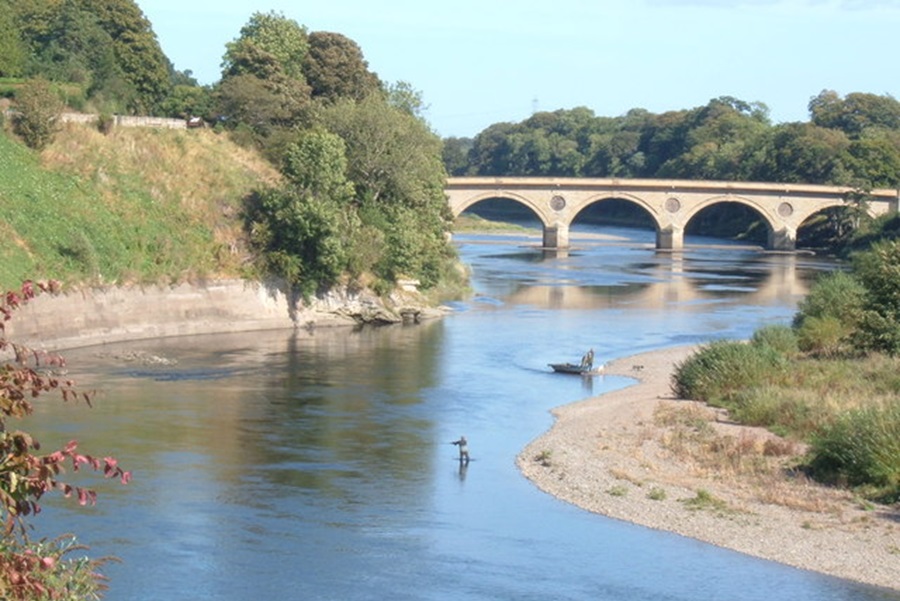River Tweed and the Great North Road
The first record of a bridge over the Tweed near Berwick is of one that was destroyed by floods in 1199. A wooden bridge was in place during the following centuries – until replaced following the union with Scotland in the early 17th century. The 355m long “Old Bridge” is still open to southbound traffic.
The Royal Tweed Bridge succeeded the Berwick Bridge as the main road crossing in 1928. In 1984, the A1 was re-routed about a mile to the west of Berwick.
The bridge shown above is near Coldstream, carrying the A698 into Scotland.
About the River Tweed
The River Tweed is crossed by the Great North Road in England at Berwick – but it’s really a Scottish river.
Its source at Tweed’s Well near Moffat is less than a mile from that of the Clyde. It flows through the Scottish Borders passing the home of Sir Walter Scott at Abbotsford and the ancient abbeys of Dryburgh, Kelso and Melrose. For 16 miles it forms the boundary between England and Scotland. It is only the final 2 miles prior to entering the North Sea at Berwick that are entirely within England.
The drainage basin covers an area of about 1,870 square miles, and in this respect is surpassed in Scotland only by the Tay. In terms of length, at 97 miles, it is Scotland’s fourth river.
The Tweed’s greatest fame is its international reputation for excellent Salmon fishing. It has suffered less agricultural run-off, industrial pollution and physical disturbance than any of our other “Great North Road Rivers”.
There are records of salmon netting on the Tweed since the 12th century, and indeed a pictish symbol stone from Roberton features a salmon. Its fisheries have been nurtured since the 17th century – and since 1998 by the River Tweed Commission.
Let ither angler choose their ain
An’ either waters tak’ the lead
O’Wielan streams we covet nane
But gi’e to us the bonnie Tweed
An’ gi’e to us the cheerfu burn
That steals into its valley fair
The streamlets that at ilka turn
Sae softly meet an’ mingle there
Thomas Stoddart, 1866
Top of page Image Credit – River Tweed at Coldstream, Adam Hope, Creative Commons Attribution-ShareAlike 2.0

